The Saints reached the top tier again by winning the EFL Championship playoffs last season under the management of Russell Martin, who quickly built a reputation for his possession-based philosophy.
That philosophy brought the club success last season but has not translated successfully to the Premier League.
The club hierarchy decided a change was needed if Southampton were to stand any chance of surviving the drop this season.
A few names were bounced around in connection with the manager’s job at St Mary’s, with the role eventually falling to Ivan Jurić – an experienced manager who has coached a range of Serie A clubs, including Genoa, Torino, Hellas Verona, and most recently (even though it was a short spell), AS Roma.
Ivan Jurić’s style of play is known for his high-intensity approach off the ball.
We expect this to be a staple of his Southampton team as he looks to bolster their defensive record.
His track record suggests he could also improve Southampton’s attacking output.
This tactical analysis will look at what to expect from Southampton’s defensive tactics under Jurić while also zeroing in on some of the key defensive issues the Saints currently have and how Jurić’s tactics could fix them.
Ivan Jurić Pressing Tactics
We published an article in 2022 that detailed Torino’s defensive and pressing tactics under Jurić.
You can read the analysis here for an in-depth insight into his tactics at that time.
Since then, he has continued to impress at Torino, which led to his being offered a huge job at AS Roma.
While that tenure did not last very long, his ideologies were still visible.
This analysis aims to highlight the key elements of his pressing tactics that we believe are relevant to his taking over the managerial reins at Southampton.
This first segment discusses Jurić’s tactics, while the latter highlights areas where a Jurić influence would/could make a difference for Southampton.
Last season, Torino registered a PPDA of 11.15, making them one of Serie A’s most aggressive teams off the ball.
Data shows that he instilled a similar intensity during his time at Roma.
Ivan Jurić Defensive Territory Map
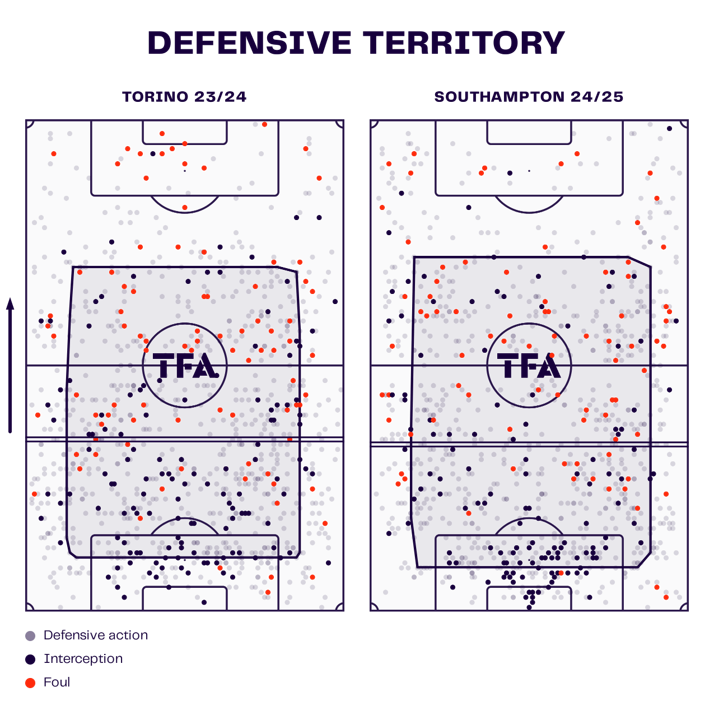
Being aggressive out-of-possession doesn’t necessarily equate to playing a high defensive line – a point proven by Jurić’s Torino last season, seen in Figure 1.
While Southampton’s defensive territory has been ever so slightly deeper than 2023/24 Torino, the two really aren’t that different in terms of overall depth.
The difference lies in where defensive action takes place.
For instance, Southampton have made a larger number of interceptions (including shots) inside the box from central areas, indicating a struggle in stopping the opponent from reaching those dangerous areas.
Meanwhile, under Jurić, Torino afforded the opposition fewer chances on goal within the penalty box.
Another noteworthy element of Jurić’s defensive tactics is the number of interceptions in midfield areas, particularly in deep/defensive midfield areas.
This indicates an ability to set his team up effectively to break up opposition play before it reaches the box.
Ivan Jurić High Regains Map
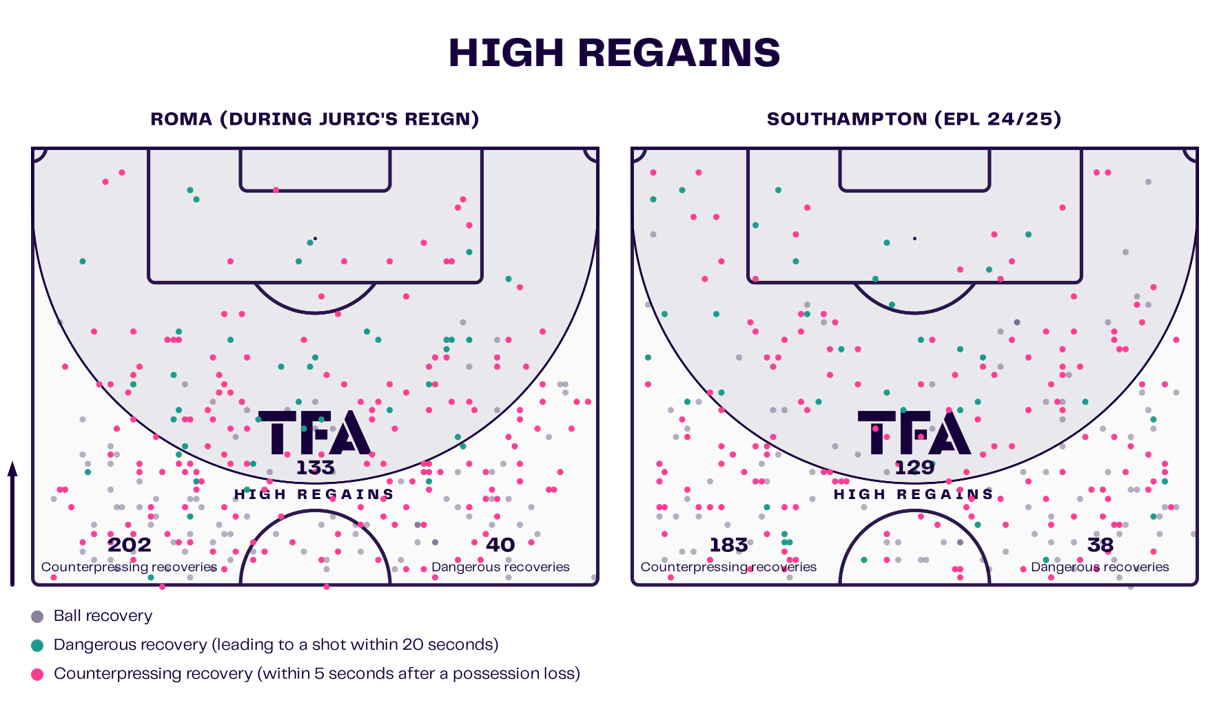
While Jurić’s time at Roma will not be fondly remembered by the fans or Jurić himself, there is something to be said for the defensive identity he instilled in the team.
As Figure 2 shows us, Roma were far more active higher up the pitch defensively in Jurić’s 12 games in charge than Southampton have been all season.
Interestingly, though, the Saints have been more defensively active inside the opposition box, while Torino tend to do their work in high/advanced midfield areas.
One of the most telling stats in the visual above is the 202 counterpressing recoveries in 12 games, compared to Southampton’s 183 in 17 games – counterpressing is an important part of the Croatian’s defensive tactics.
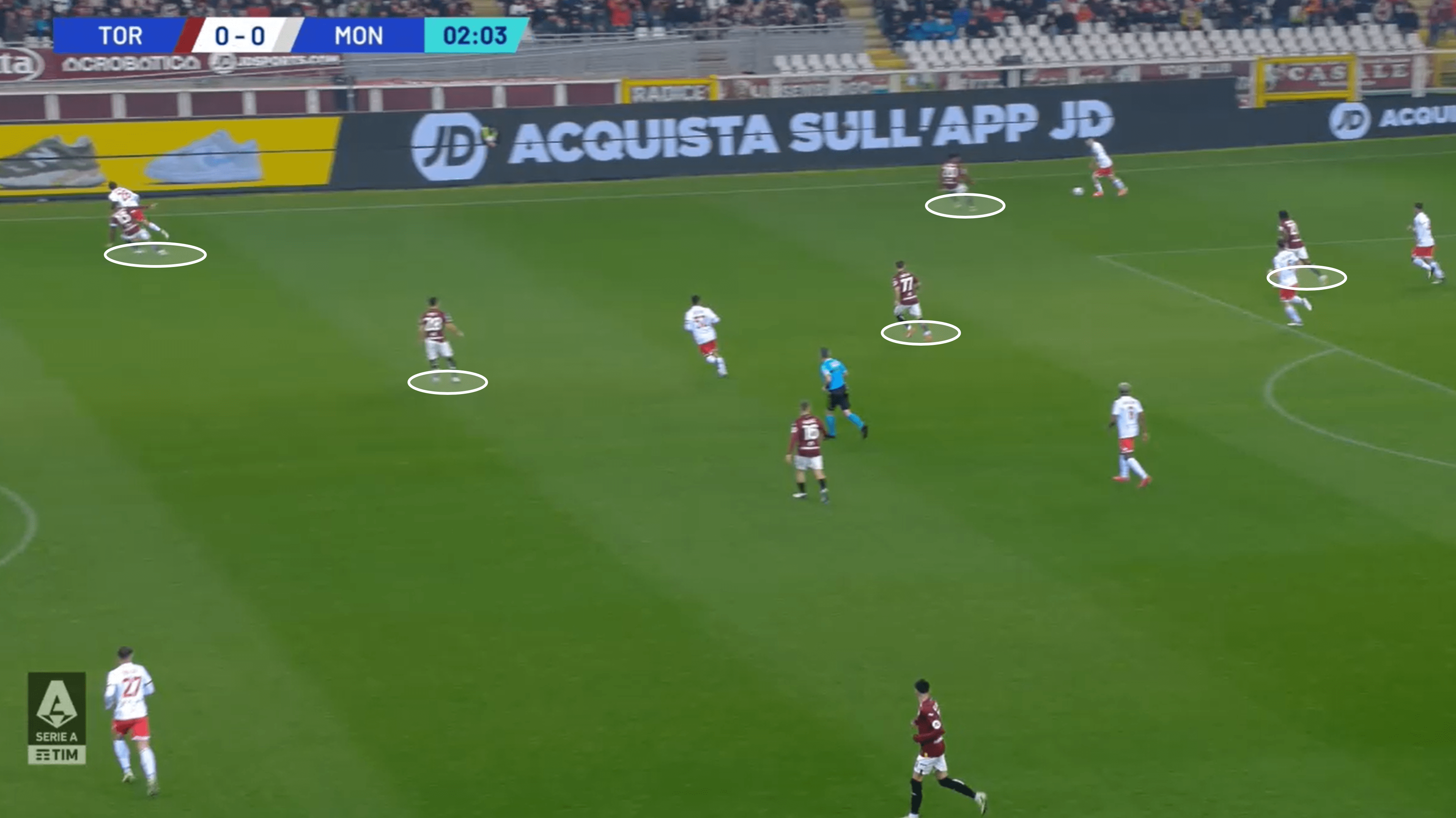
While we did say Jurić liked his Torino side to be more defensively active in midfield areas, there were still plenty of moments where we’d see his side press in the final third with good execution.
A good press is about more than just the player closing the ball down – you also need good support from teammates to make it an effective unit press.
This is something Jurić is very capable of – setting his team up to execute a well-structured press, which is also something Southampton have had issues with this season; more on that later in the article.
Figure 3 above shows several individual roles coming together to form that press.
From pressing the ball to tightly marking the wider runner to blocking key passing lines and occupying key midfield spaces, Torino’s press was often effective in disturbing the opposition’s possession.
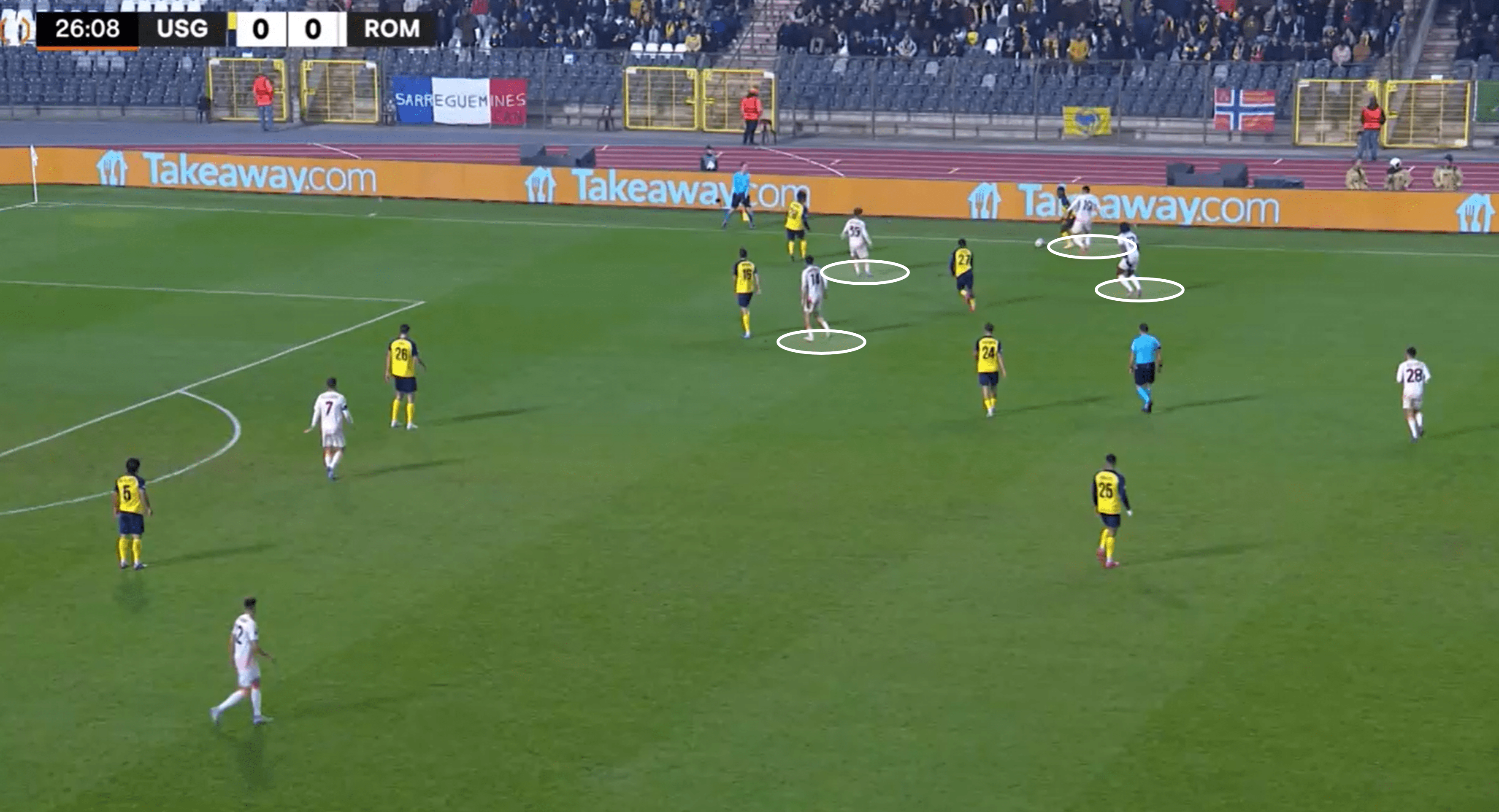
As we discussed earlier, counterpressing is a key element of Jurić’s defensive tactics and is something to expect from Southampton in the coming months.
Figure 4 gives us an example of the work Jurić was able to do at Roma in a short time.
His side looked to quickly block the opponent from making progress following a turnover.
The initial reaction leading into the initial positioning in a counterpress are two essential ingredients.
In this case, Roma had them both – pressure on the ball while marking nearby passing options and creating a strong presence close to the ball.
What isn’t visible in that image is Roma’s counterpress being beaten – this was down to poor individual defensive execution, which raises an important point about having the right players for your tactical philosophy.
Key Southampton Defensive Issues
It is unfair to expect an overnight fix for Southampton’s defensive issues, but Jurić and his backroom staff likely identified the Saints’ defensive record as their biggest concern.
At the time of writing, Southampton have conceded an average of 1.89 goals per 90 in the Premier League – the division’s third-worst record this season.
While Russell Martin has garnered a reputation for his possession-based tactics, Southampton’s lack of defensive identity and quality this season has been a huge issue—the statistics don’t lie.
Jurić would definitely change that.
We expect to see glimpses of his aggressive and intense defensive style in the club’s next few games.
In turn, we expect Southampton’s PPDA of 14.23 (one of the least aggressive teams in the EPL) to drop as the Saints show a more aggressive side.
Instilling a tactical identity is not the only challenge Jurić faces, though.
He also needs to connect with the players on a level that will boost their overall confidence, morale, and team cohesion.
Fixing some of the Saints’ biggest defensive issues will be high on his to-do list.
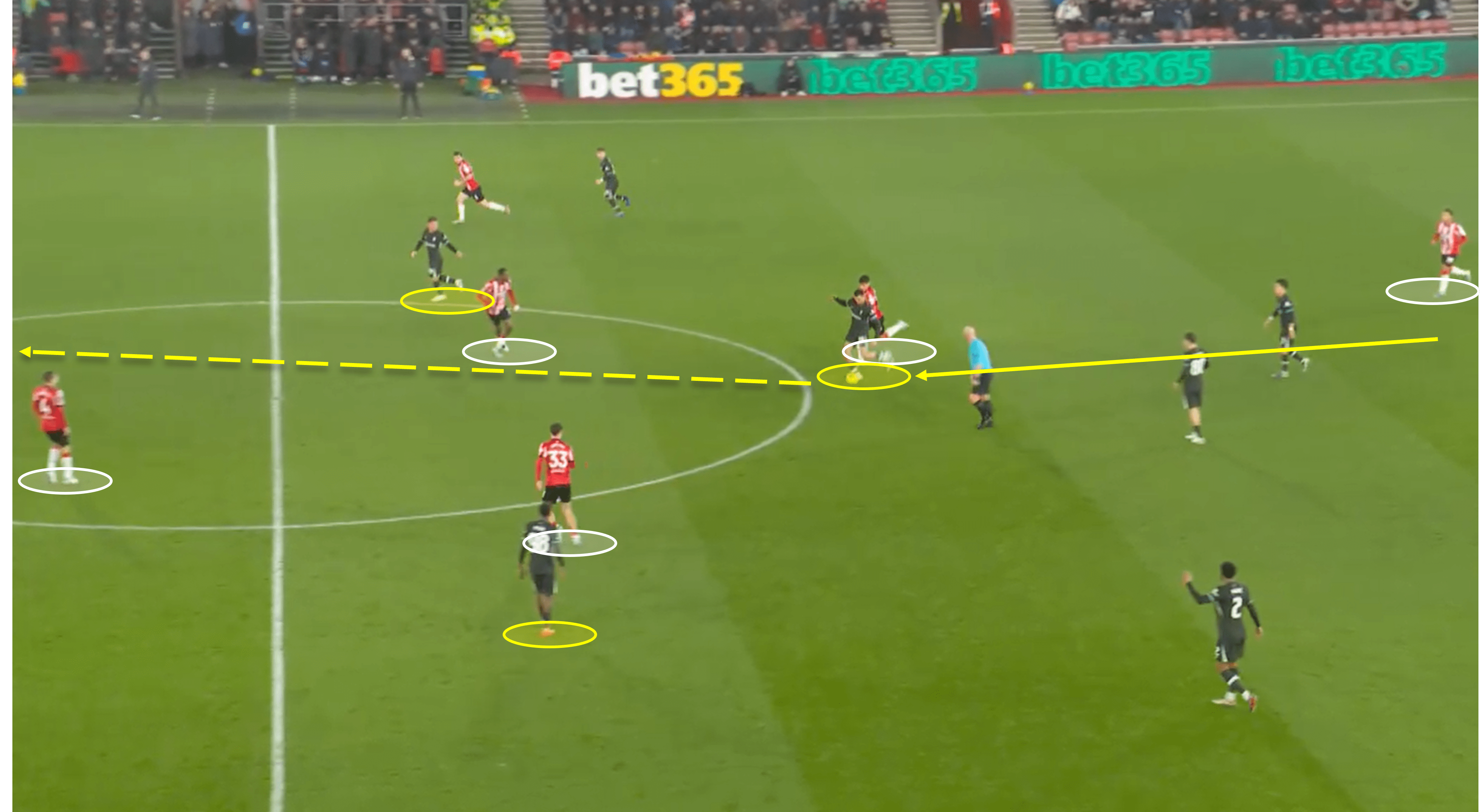
Earlier, we touched on Southampton’s lack of a consistent pressing structure regarding both unit shape and individual roles.
The image above provides an example: Liverpool’s Trent Alexander-Arnold dribbled into the position shown above with relative ease, bypassing the two highest Saints players.
There’s a lot to unpack from Southampton’s perspective here when talking about pressing and how it should’ve been done.
From the beginning of this phase, Southampton showed no sign of preparation beyond the two most forward players looking to swarm Alexander-Arnold – the midfield in the image above may show a symmetrical shape where players may appear to be in a good position, but that is far from the case.
Where TAA is in the image above, he has pressure on him.
Still, the Southampton player was never really getting there – the Saints’ first mistake was not having a second wave of pressing player(s) ready to engage.
From there, they become victims of their own tactical execution.
Some may suggest that one of the two highlighted central midfielders in Figure 5 should press the ball, but as you can see, both midfielders have Liverpool players right by them – if they press the ball, TAA has an easy forward pass into that area.
At the time, the deeper Southampton midfielder should have recognised the danger and either gone to mark one of the aforementioned Liverpool midfielders so that his teammate could press TAA, or he could have pressed him himself – neither of these things happened.
The Liverpool full-back had the chance to play the through-ball into Darwin Nunez.
This example showed two key flaws from Southampton – a lack of tactical preparation for the press and a lack of individual ability to think and act in the moment.
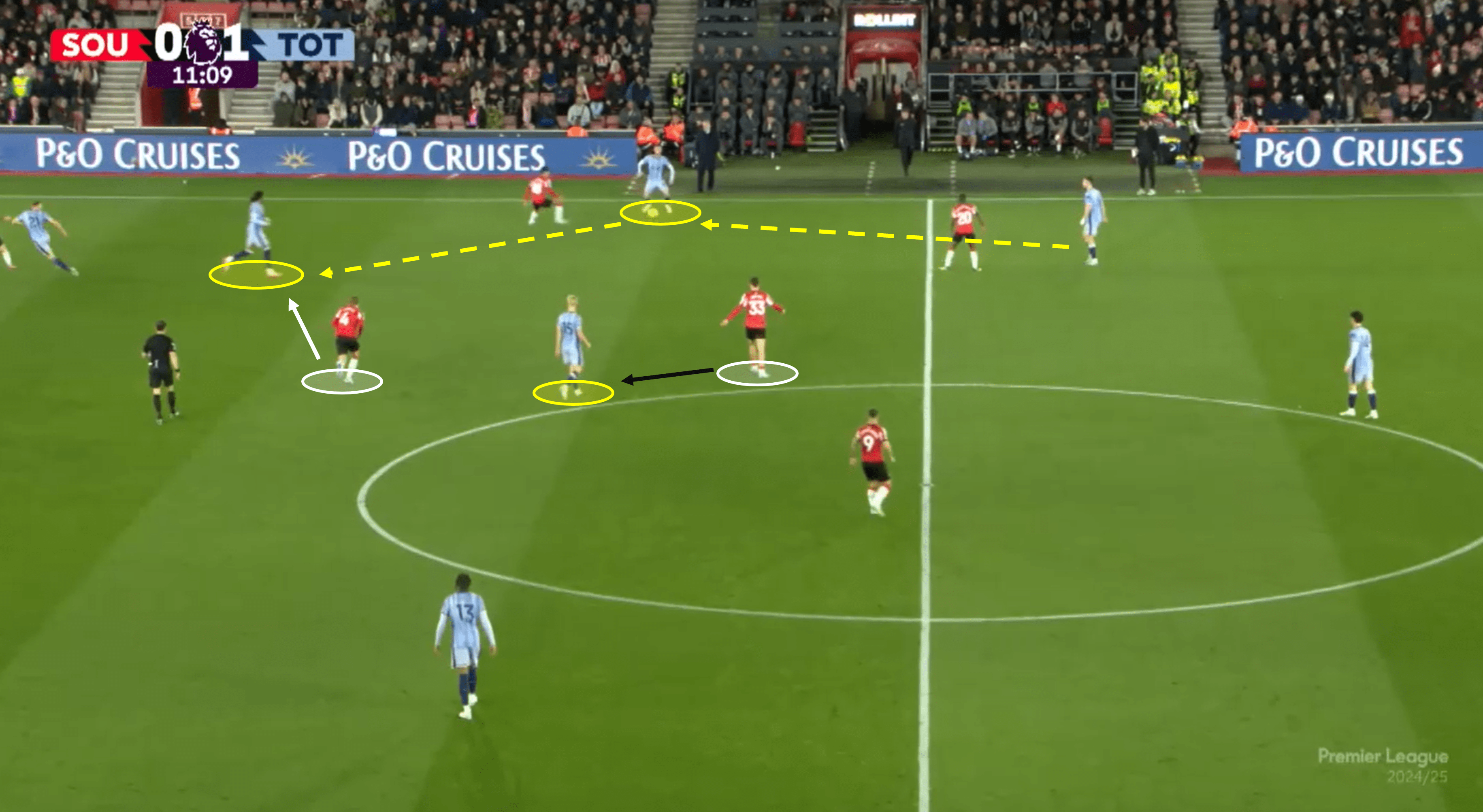
Figure 6 shows similar tendencies and characteristics to Figure 5 in terms of a lack of individual know-how – players recognise danger too late and, therefore, make their midfield unit far too easy to play through.
Southampton’s often-disappointing lack of organisation will likely change under Jurić.
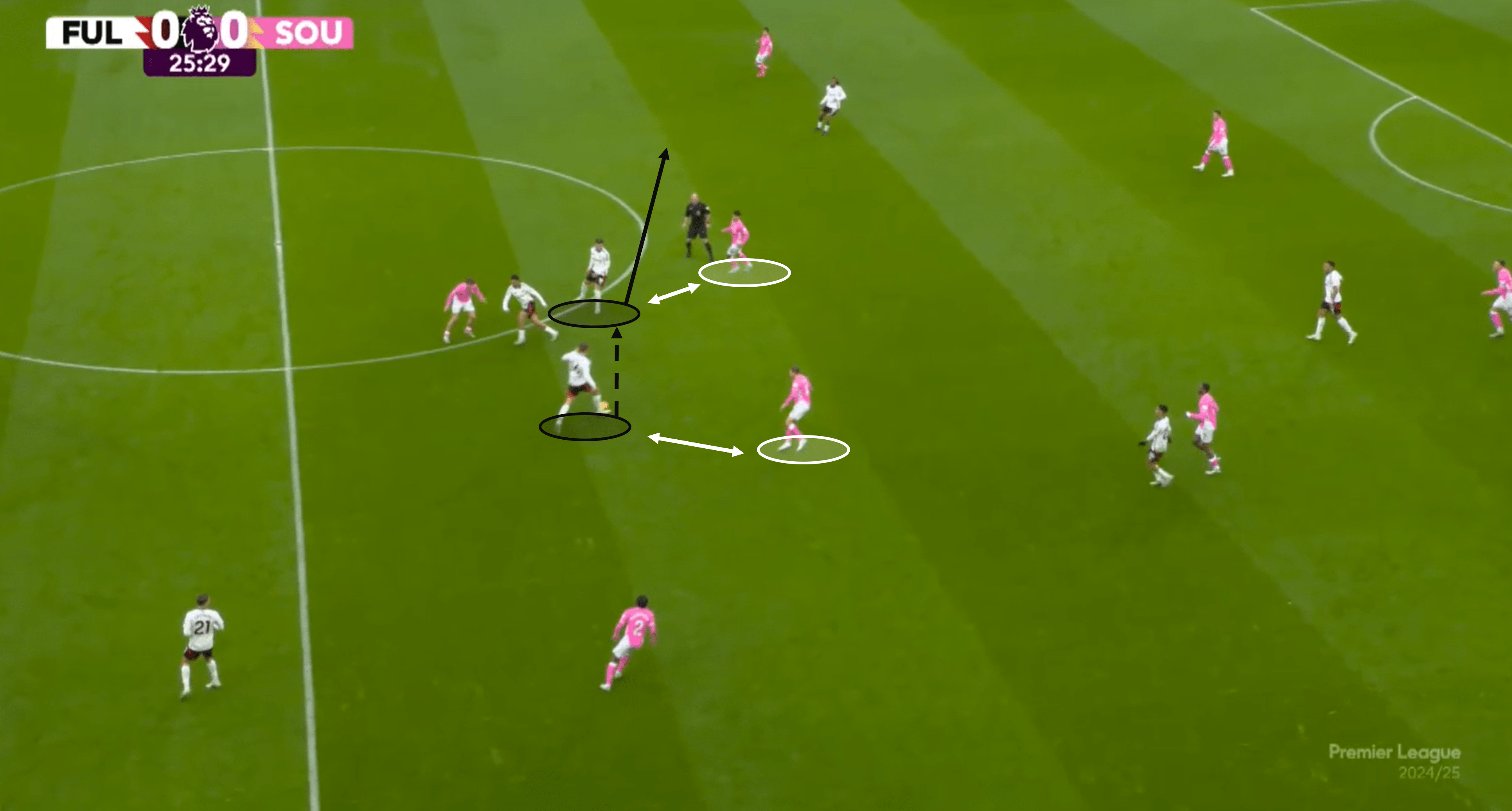
As we saw earlier, Southampton’s counterpressing tendencies have been less present this season compared to what we typically see from a Jurić team, so this is something else we expect the Croatian coach to work on in the early days of his reign.
In Figure 7, Southampton’s positioning in midfield is not bad – the letdown here was individual execution in the counterpress following a turnover.
As we said, their initial positioning was positive in that they showed signs of slowing Fulham down during the transition.
However, the two highlighted Saints players showed absolutely no continuation of that initial good reaction.
Instead, they opted to stand off the Fulham player on the ball, as well as the highlighted passing option – this ultimately gave the London side a chance to bypass a lacklustre Southampton counterpress and progress their attack down the left flank.
Throughout the three examples in this segment, there have been a couple of overriding themes – individual execution in a press/counterpress and tactical preparation relating to unit positioning/action when off the ball.
Jurić will look to rectify those errors.
He is likely keen to quickly build a basic foundation for a pressing team, and eradicating those errors could be key to improving Southampton’s defensive performance and output.
We know Jurić is able to build those defensive foundations while also transforming them into key tactical principles – whether or not he can instil this philosophy into the Southampton players remains to be seen.
Conclusion
Jurić has a lot of work to do if he is to keep Southampton in the Premier League.
This analysis has highlighted some of his key defensive principles from his time in Serie A and how they could be applied to solve some of Southampton’s biggest defensive problems.
Technical and tactical improvements are just part of what Jurić will need to achieve.
He will also need to boost the players’ confidence and overall mentality so they can be consistently effective in a pressing system.

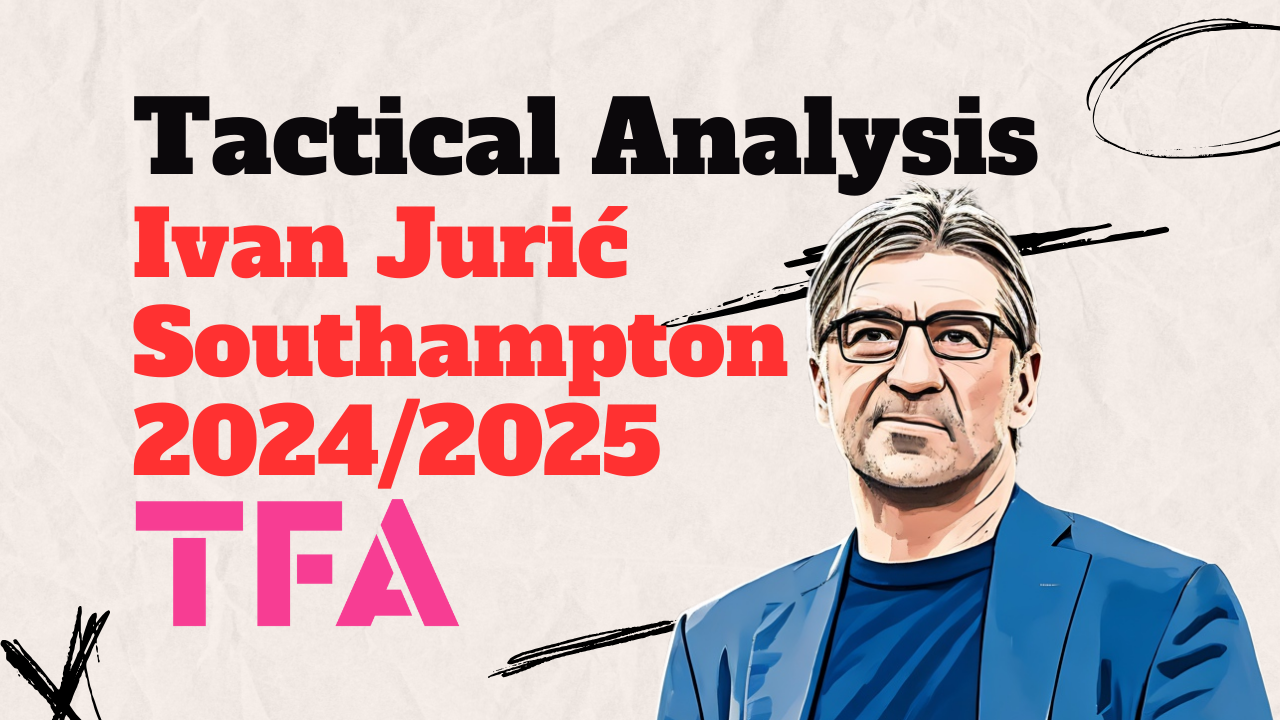




Comments